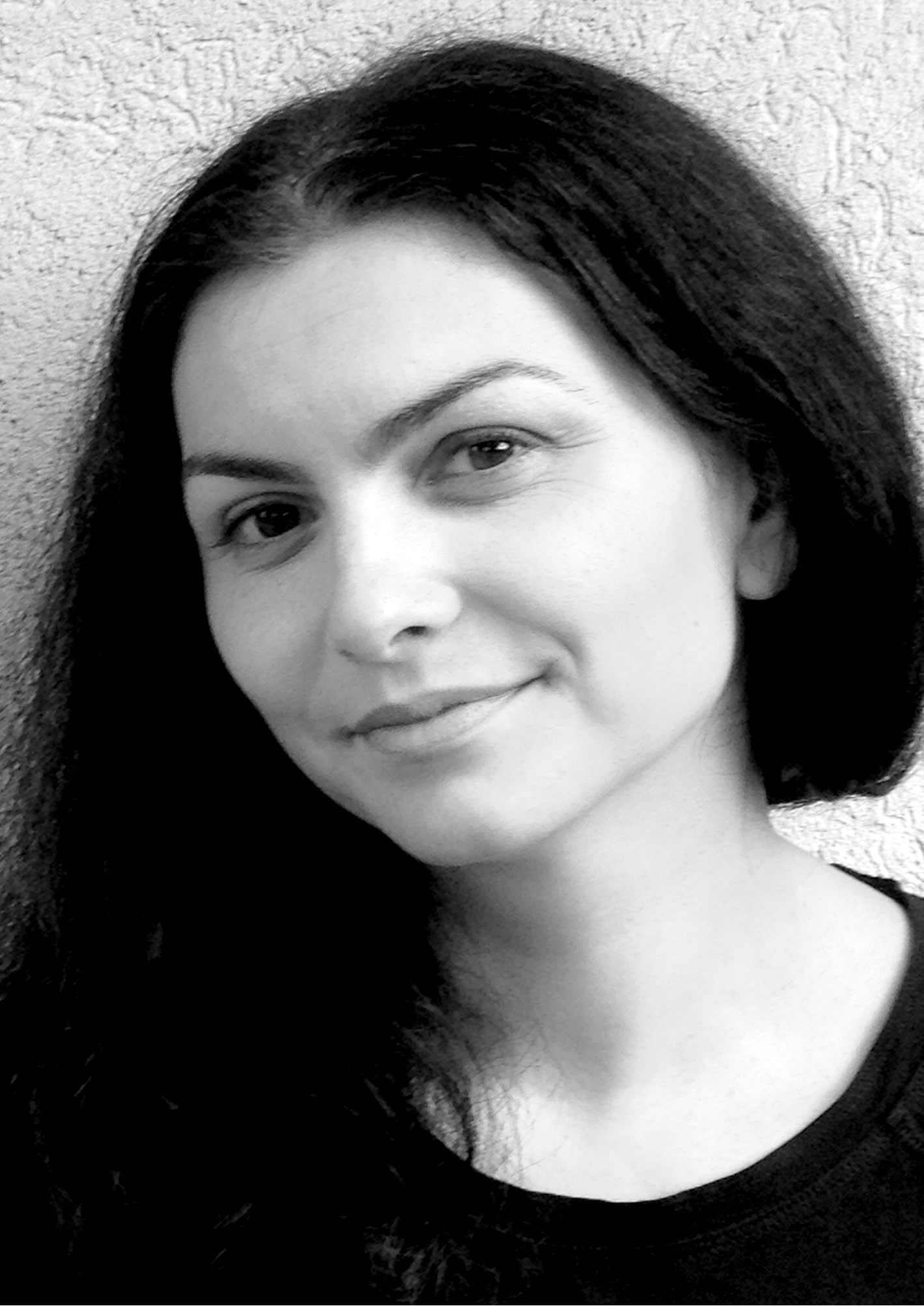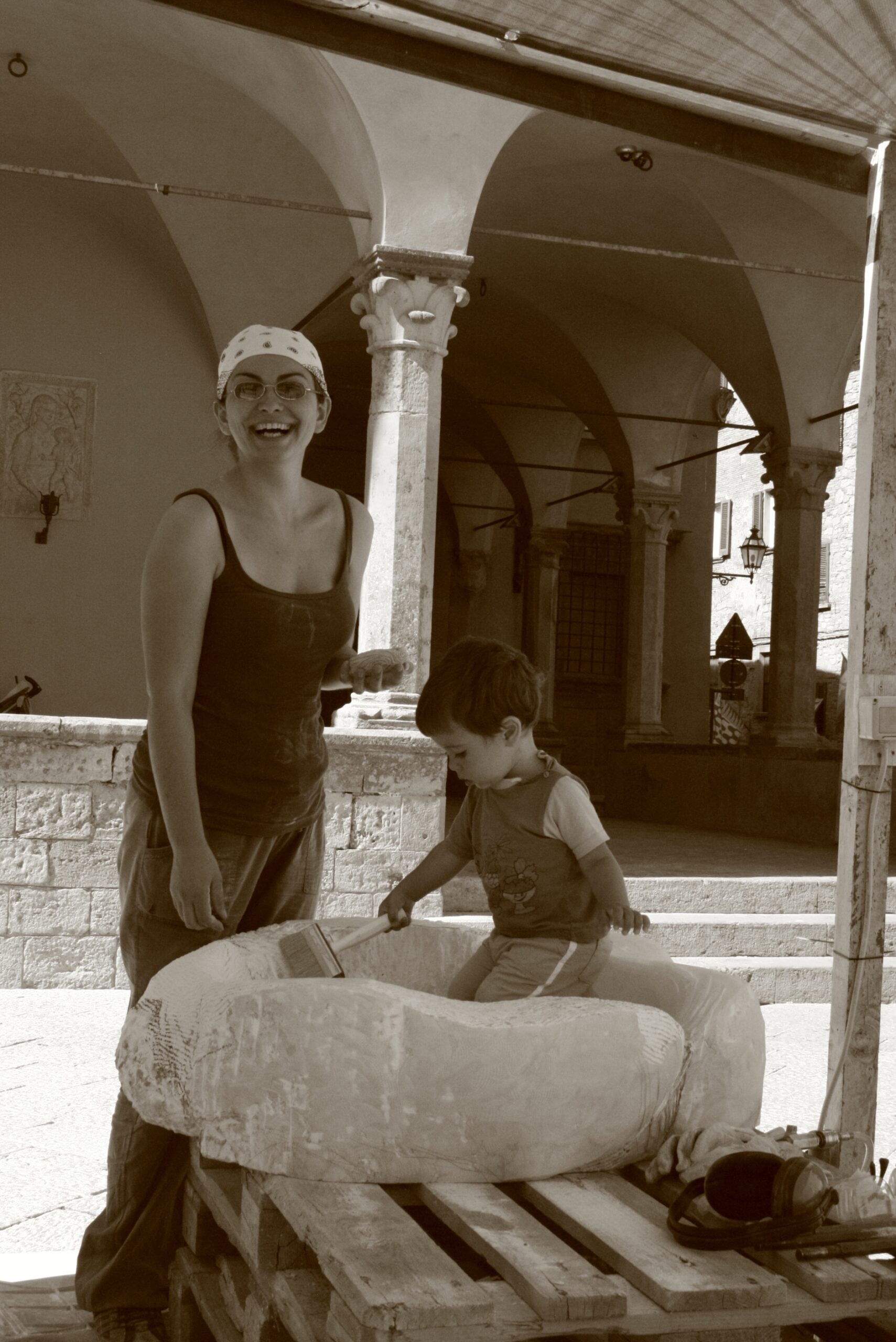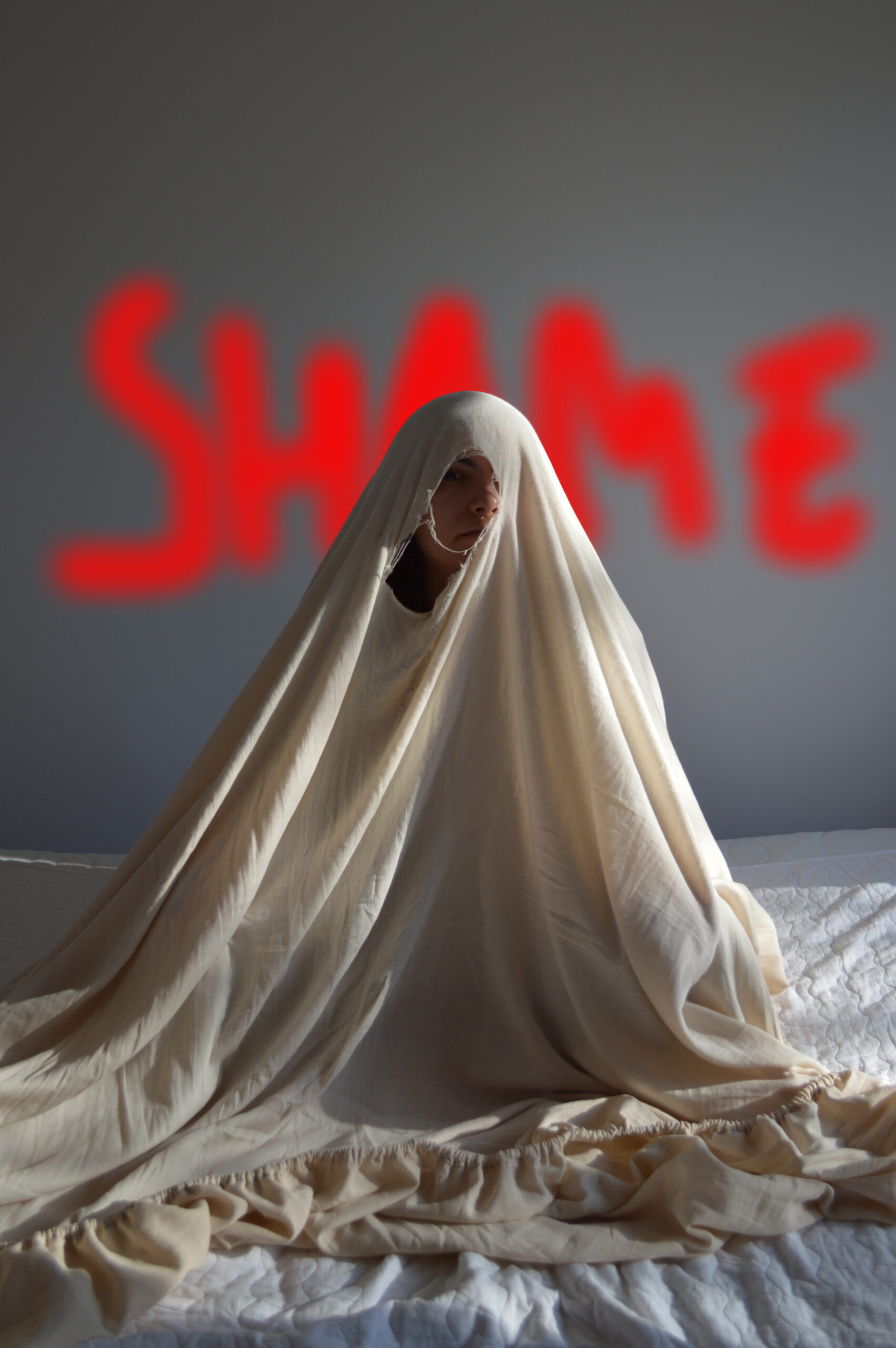
Eufrosina Săbiescu is a Romanian artist currently residing in Vienna, Austria. She holds a BA and MA in sculpture from the National University of Arts, Bucharest and is the receiver of a Postgraduate Scholarship for Artists at Kunstakademie Düsseldorf. Her artistic trajectory gravitates around negative space in sculptural representation, oftentimes working with moulds taken of her face and body, serving as means of exploring the dynamics between inner /outer self and between creator and onlooker. Passionate advocate for mental health support in the creative field and for the inclusiveness of mother artists in the art community, she lends her voice to these causes through her works and published articles.
„There are good artists who have children. Of course, there are. They are called men.”
-Tracey Emin
Never would I have thought that such an assertion holds much truth to it. As a modern woman, the belief that women can do it all and should do it all was strongly ingrained in me. Not only seemed everything achievable but at top performance and no less. Many years later, I still disagree with the absoluteness of the above statement, but I do understand where it comes from, and that is a place of harsh realities for many women artists.
I became a mother right after finishing my postgraduate studies and moving far away from my family to a foreign country with a language I could barely speak. I knew no one, I had no footing in the local art scene and I had never had a baby in my arms before. And still, I believed that being a great mother and a great artist at the same time was natural and undoubtedly doable. After all, we are women, we can do it all. However, what followed were postpartum depression, brain fog, demotivation, health problems and the inability to enter a closed off art world or to find a studio where I could create my sculptures. But above all, there was shame, shame for failing as an artist, shame for lacking as a mother, disappointment for not being able to rise to the standards. Why is it that we put such pressure on ourselves? Why do we set the bar so high instead of normalizing that we can deeply care for our children while, at the same time acknowledge that we struggle? The culture of Wonder Woman as an all-achieving and an all-powerful being has made its way into our society replacing traditional norms such as “it takes a village to raise child”. Complete involvement is expected in order to be successful in either art or motherhood. Subsequently, a maternal ambivalence is created, placing women in the position of having to juggle multiple realities and personalities at once, – a role neither sustainable over time, nor beneficial to the young mothers. In a world where Wonder Woman has become the new norm, the question is: Can we escape it?

Eufrosina Săbiescu – Motherhood
It seems there is a moment in the life of every creative parent when prioritizing and compromising come unavoidably into play. Artists find themselves facing the decision of either stepping away from the art scene or limiting the time dedicated to their
children. However, society has been historically relentless in criticizing successful artists for failing as mothers. One only needs to look at Barbara Hepworth and the plethora of criticism that she received for prioritizing her career while her partner, an artist himself, who took off after the birth of their children, has not suffered the same scrutiny. Many others have been put on the spot by public shaming and in a world of social media such denigration is even more prevalent. This begs the question of whether focusing on art first is the optimal choice and people are quick to offer a reversed involvement as a popular solution. Namely, mothers
should focus on child-rearing and pick up their careers once the children become more independent. It seems plausible enough and many artists, such as me, took that path with hope and enthusiasm. Nonetheless, three children and ten years later, as I have become confident and strong enough to return to the art scene, I have experienced the aftermath of such a misguided perception. Most of the Artists Grants and similar opportunities have an age limit, although they are not advertised as youth oriented. Moreover, galleries consider an artist that has not become accomplished by a certain age to be an investment risk and won’t take one on. Curators have been known to drop an artist at news of pregnancy and not to resume a contract later on. Sculpture, as in my case, is even more problematic as it requires physical and mental fitness in working with heavy materials and power tools, in
addition to the predicament of finding a studio to begin with. Therefore, achieving an art career after taking a long break is an indisputable challenge. In facing the dilemma of prioritizing either work or children, “women artists…”-as L. McNeil wrote, “grapple with how to sustain their creative lives after having children and to justify the choices and compromises
they make- because whatever those choices are, they are wrong”.
To aggravate things further, a derivate of Wonder Woman culture developed in time, built exclusively on the strong independent professional aspect of it and rebuffing the traditional roles of mother and wife. Artists were discouraged in following these paths and cautioned that “there is no more sombre enemy of good art than the pram in the hall”- Cyril Connolly. For many it seemed that there was no other way to follow a profession in art, but to concede a side of them in order to achieve the other. Domestic life and parenthood were frowned upon and the ones guilty of such choices were met with closed doors by the art community. Shame, brought upon by the condemning society or self-imposed by the conflicted artists themselves, was inescapable either way.
Fortunately, the past years have witnessed the birth of a new outlook on motherhood and art. The mentality is shifting towards inclusiveness and assistance and a slow but steady progress can be noticed in this regard. Support is growing with podcasts, help groups and books, – for instance Hettie Judah’s “How to not exclude artist mothers (and other parents)”, constantly on the rise. Successful artists such as Xie Rong, also known as Echo Morgan, have publicly addressed the theme of parenthood in their performances and artworks, drawing inspiration from it and using it as creative fuel, while at the same time being open about their personal struggles and experiences. A veil is being lifted leaving room for transparency. It seems a balance, albeit precarious, can be achieved when we stop shaming ourselves and we start building on our own emotions, accepting that they are neither good, nor bad, but complex and creatively fertile. A glimpse of hope exists therefore for the art paths of creative mothers and concurrently for a future implementation of a proper support system aiming to integrate parents into the art community. Nonetheless, it is essential for the change to start from within. Understanding that the standards that we hold ourselves to are just ingrained artificial constructs might be the first step in opening our minds to new possibilities and embracing who we are, as we are. Not Wonder Woman, but simply Woman, Mother and Artist.

Eufrosina Săbiescu – Shame
*First published in ArtonWorld.com issue 17, June 2024
